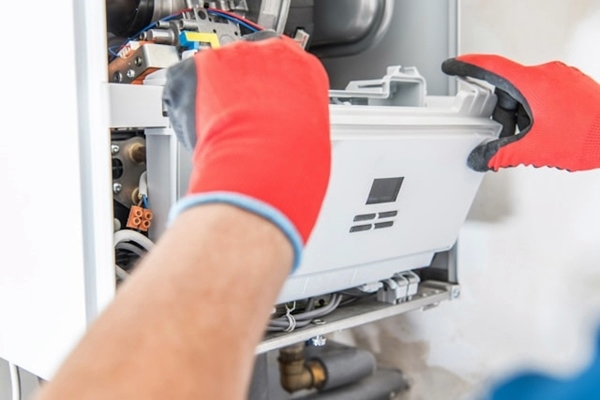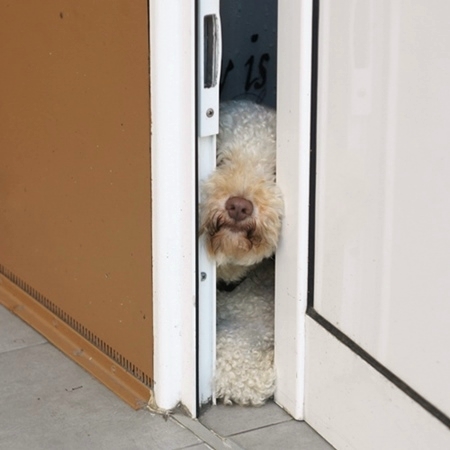How to Save on Heating Your Home This Winter

Furnace cleaning is not some phantom project HVAC guys created to make a few extra bucks. It’s essential if you want to ensure your furnace provides safe, dependable service. But it’s also essential that you have the cleaning performed by someone who knows what they’re doing. Here are ten reasons to call Steve’s for furnace cleaning in Arvada.
Benefits of Professional Furnace Cleaning
Regular furnace cleaning comes with numerous advantages that go beyond just having a spotless unit. These benefits enhance performance, safety, and cost-efficiency, making professional cleaning a worthwhile investment.
Furnace Cleaning Improves Efficiency
When a furnace is dirty, airflow is restricted, forcing the system to work harder to achieve desired temperatures. This extra strain can lead to inefficiencies and breakdowns. A clean furnace, however, operates smoothly, conserving energy and reducing wear and tear.
Cleaning Protects Your Warranty
Many furnace manufacturers require annual professional maintenance to keep warranties valid. Failing to meet this requirement can result in denied claims when issues arise. Scheduling regular cleanings ensures your furnace complies with warranty terms, safeguarding your investment.
Cleaning Prevents Furnace Breakdowns
Colorado’s long winters mean furnaces work hard for most of the year, starting as early as October and sometimes into May. This constant demand puts stress on your furnace, increasing the risk of breakdowns. Regular cleaning ensures your furnace remains reliable, even during the coldest months.

Detecting Dangerous Leaks
Furnaces produce emissions like carbon monoxide during operation. Over time, dirt buildup can cause leaks, allowing harmful gases to escape into your home. Regular cleaning helps identify and address these issues, ensuring your family’s safety.
Lowering Energy Bills
A clean furnace operates more efficiently, using less energy to heat your home. This translates to noticeable savings on your monthly utility bills. By removing dirt and optimizing airflow, you’ll keep both your furnace and wallet in better shape.
Reduced Airborne Allergens
Furnaces pull in air filled with dirt, dust, pollen, and other pollutants. While filters catch some of these particles, much of it settles inside the system, eventually circulating back into your home. This can aggravate allergies and respiratory issues. Cleaning your furnace minimizes these health risks, creating a cleaner living environment.

Improved Air Distribution
Dust-clogged furnaces struggle to distribute warm air evenly, leaving some rooms cold while others overheat. Professional cleaning restores proper airflow, ensuring consistent comfort throughout your home.
"There’s nothing worse than walking from a warm living room to a chilly bedroom, but cold spots won’t be an issue if you keep up with regular furnace maintenance. Swapping out the filters regularly and cleaning the furnace can help prevent clogs and wear and tear that lead to uneven heating."
—Paige Bennett, Angi Solution Center
Extending Furnace Life
A well-maintained furnace can last 15-30 years, while neglected units often fail prematurely. Dirt and debris increase wear on components, shortening the system’s lifespan. Routine cleaning reduces strain, helping your furnace last longer and saving you money on replacements.
Investing in regular furnace cleaning keeps your system efficient, safe, and cost-effective. Don’t wait for issues to arise—schedule professional cleaning today to enjoy the benefits of a well-maintained furnace.
By addressing these critical aspects, professional cleaning ensures your furnace remains dependable and efficient throughout the year.
Common Signs You Need Furnace Cleaning
Wondering whether it’s time to schedule a furnace cleaning? Look for these telltale signs that indicate your system might be overdue for professional maintenance.
- Unusual Noises: Banging, squeaking, or rattling can indicate dirt buildup or mechanical issues.
- Inconsistent Heating: Uneven room temperatures often point to airflow obstructions.
- Higher Energy Bills: A sudden spike in energy costs may signal your furnace is working harder due to dirt and debris.
- Dusty Air: Excessive dust around your home suggests poor filtration and a dirty furnace.
- Foul Odors: Burning smells or musty odors can result from accumulated debris or mold.

If you notice any of these symptoms, don’t delay. Scheduling a cleaning promptly can prevent further issues and restore your system’s performance.
How to Prepare for Professional Furnace Cleaning
Getting ready for a furnace cleaning appointment ensures the process goes smoothly and efficiently. Follow these simple steps to prepare your home and furnace for professional attention.
- Clear the Area: Ensure the furnace and surrounding space are free of clutter for easy access.
- Replace Air Filters: If not recently done, replace or inspect your air filters to maximize cleaning effectiveness.
- Note Issues: Document any performance problems or concerns to share with the technician.
- Plan for Pets: Keep pets in another room to avoid disruptions during the cleaning process.

By taking these steps, you can help the technicians work more efficiently and ensure your furnace gets the thorough cleaning it needs.
FAQs About Furnace Cleaning
Furnace cleaning is a vital maintenance task, but many homeowners have questions about the process. Here are answers to some of the most common inquiries to help you better understand its importance.
Furnaces should be cleaned at least once a year, preferably before the heating season begins, to maintain optimal performance and safety. Annual cleaning prevents dirt and debris from accumulating, reducing wear and tear on critical components. Regular maintenance also ensures that any potential issues are caught early, avoiding costly repairs and improving overall system longevity.
On average, the process takes about 1-2 hours, depending on the condition of the furnace and ductwork. A straightforward cleaning may be completed quickly, while a heavily clogged or neglected system may take longer. Professionals often inspect key components, such as the blower, heat exchanger, and air ducts, to ensure a thorough cleaning.
Absolutely! A clean furnace operates more efficiently, using less energy to heat your home. By reducing strain on the system and improving airflow, cleaning can lead to noticeable savings on your monthly energy costs.
While you can replace filters and vacuum vents, professional cleaning ensures a thorough inspection and service for hard-to-reach areas. DIY efforts can be a good supplement, but professionals have specialized tools to address deeper issues and ensure optimal performance.
Neglecting cleaning can lead to reduced efficiency, higher energy bills, potential breakdowns, and voided warranties. Dirt buildup forces the system to work harder, increasing wear on components and shortening its lifespan. Over time, the cost of repairs and replacements far outweighs the savings from skipping maintenance.
Regular furnace cleaning not only extends your system’s lifespan but also provides a healthier and more comfortable home environment. Don’t delay—schedule your cleaning today!
Explore Our Arvada Furnace Cleaning Services
To learn more about the residential and commercial furnace cleaning services we offer, visit the page below.
Furnace Cleaning ServicesThe sum total of all the benefits listed above is peace of mind for the homeowner. No more worrying about allergens being endlessly distributed throughout the house. No more worrying about dangerous emissions leaking into the living spaces. No more fretting over larger than necessary energy bills. And no more emergency calls in the middle of the night when the furnace breaks down. It’s a wonderful thing. Call Steve’s to arrange for expert furnace cleaning in Arvada today.
Start Breathing Easier.
Your air ducts are the lungs of your home and keeping them clean keeps you and your family healthier and your HVAC equipment working optimally.

